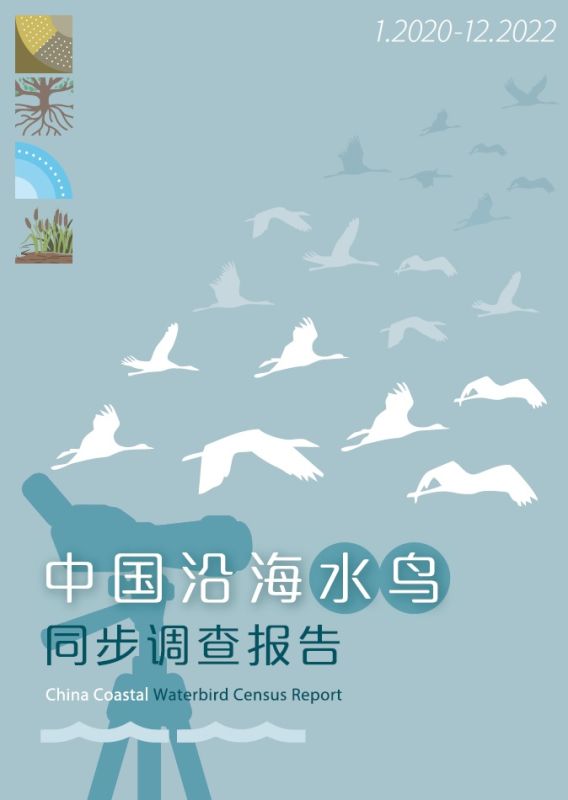由太古集團慈善信託基金贊助、最新的「中國沿海水鳥同步調查」報告已經正式面世!
報告由昆山杜克大學環境科學助理教授蔡志揚博士、科研助理廖書躍小姐及「勺嘴鷸在中國」成員楊子悠女士共同撰寫,香港觀鳥會出版。
自2005年至今,儘管歷經重重難關,例如人員變動、新冠疫情等,中國沿海水鳥調查橫跨接近二十載的基線調查,仍能為水鳥的研究例如遷徙路線、數量變化等提供重要的科學證據。
報告整合了2020至2022年間中國沿海20個調查點共636次調查,按全年單一輪次峰值計算共記錄得185種約90 萬隻水鳥。這些物種當中包括4 種被世界自然保護聯盟瀕危物種紅色名錄列為極危、6種為瀕危和13種為易危的鳥種。這3年的調查結果表明,有26種水鳥的數量超過了其遷飛區總數的10%,其中半蹼鷸的數量更超過了其遷飛區總數的95%。這些結果顯示中國沿海濕地對東亞-澳大利西亞遷飛區內的水鳥有無可取代的重要性。若這些濕地遭到任何天然或人為破壞、濕地質量出現下降、或爆發疾病,水鳥種群很可能會受到毀滅性的打擊,面臨物種滅絕危機。
加上近年濕地面對的威脅有增無減:土地用途改變的發展、紅樹林造林或恢復造成潮間帶光灘面積減少、可再生能源建設,甚或是防鳥網誤捕等等。為此,對水鳥和濕地的保護迫在眉睫。
國家政府近年來實行各項措施,包括更新國家重點保護物種名錄、實施《中華人民共和國濕地保護法》、劃定和管理生態保護紅線,以保護重要濕地。最近第二期中國黃(渤)海候鳥棲息地更成功列入IUCN國際自然保護聯盟世界自然遺產名錄,說明濕地保育勢在必行。
故此,長期而持續的水鳥調查工作除了可以紀錄沿海水鳥族群數量變化外,更能夠反映沿海濕地的現況。這些數據為濕地和水鳥的保育提供有力的科學基礎,以此制定保育措施,對維持沿海地區的生態多樣性也有著深遠的意義。
(中國沿海水鳥同步調查報告2020 – 2022 及之前4 本報告的網上版下載連結: https://bit.ly/3OXDfLU)
Sponsored by the Swire Trust, the latest report on the ‘China Coastal Waterbird Census (CCWC)’ has officially been released! The report was co-authored by Dr. Jimmy Choi, Assistant Professor of environmental science at Duke Kunshan University, research assistant Ms. Liao Shuyue, and Ms. Yang Ziyou from "Spoon-billed Sandpiper in China," and published by the Hong Kong Bird Watching Society.
Since 2005, despite numerous challenges such as the pandemic and personnel changes, CCWC, which spans almost 2 decades, has still provided important scientific evidence for waterbirds study, including migratory routes and population changes.
The report integrates 636 surveys conducted at 20 coastal survey sites in China from 2020 to 2022. Based on annual peak values, a total of 185 species and approximately 900,000 waterbirds were recorded (the peak sum across all survey points in a single round). Among these species, 4 are listed as Critically Endangered (CR), 6 as Endangered (EN), and 13 as Vulnerable (VU) on the IUCN Red List of Threatened Species. The survey results over these three years indicate that 26 species of waterbirds had populations exceeding 10% of their total migratory ranges, with the population of the Asian dowitcher surpassing 95% of its migratory range. These findings highlight the irreplaceable role that China's coastal wetlands play for waterbirds within the East Asian-Australasian Flyway (EAAF). If these wetlands suffer any natural or human-induced degradation, wetland quality declination, or disease outbreak, the waterbird populations could face devastating impacts and a risk of extinction.
In recent years, the threats to wetlands have been increasing, including land use changes, expansion of mangrove forests, renewable energy development, and bycatch in razor clam netting. Therefore, it is crucial to prioritize the protection of waterbirds and wetlands.
In recent years, the Chinese government has implemented various measures in Waterbird and Wetland conservation, including revising National Key Protected Wild Animal List in China, enacting the Wetland Protection Law of the People's Republic of China, and establishing and managing Ecological Protection Red Lines to safeguard important wetlands. Recently, five nominated sites of the migratory bird sanctuaries along the coast of Yellow Sea-Bohai Gulf of China successfully passed the review process to be included on the World Heritage List by the United Nations Educational, Scientific and Cultural Organization (UNESCO), underscoring the necessity of wetland conservation.
Consequently, long-term and continuous waterbird surveys not only document the changes in coastal waterbird populations but also reflect the current situation of coastal wetlands. These data provide a robust scientific basis for the conservation of wetlands and waterbirds, facilitating the development of effective conservation measures, and have profound significance for maintaining the ecological diversity of coastal areas.
(Link for the online version of the China Coastal Waterbird Census Report 2020 -2022 and the previous 4 reports: https://bit.ly/3OXDfLU)




